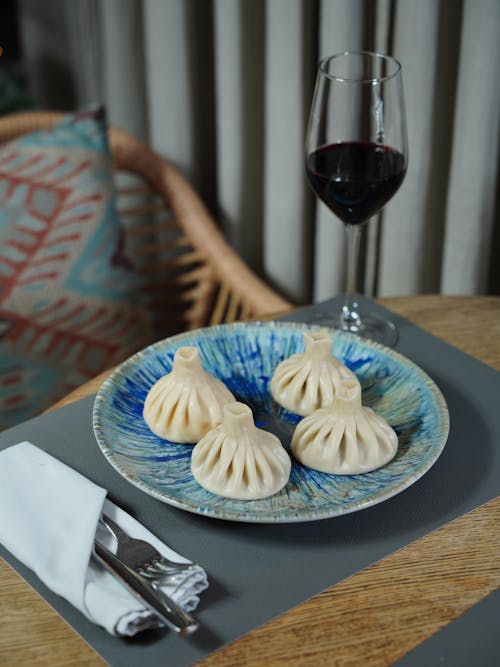Introduction
Georgian cuisine is a vibrant and flavorful tapestry woven from the rich history, diverse cultures, and unique geography of the country. Nestled between Europe and Asia in the heart of the Caucasus, Georgia has developed a distinct culinary identity that reflects its position as a crossroads of civilizations. This article delves into the essence of Georgian food, highlighting its traditional dishes, key ingredients, and cultural significance.

The Rich Heritage of Georgian Cuisine
Georgia’s culinary heritage is deeply intertwined with its history and geography. The country’s fertile lands and favorable climate have long supported a wide variety of agricultural products, from luscious fruits and vegetables to fragrant herbs and spices. Georgian cuisine also reflects the influences of its neighbors and invaders, including Persians, Turks, and Russians, each of whom has left a mark on the local food traditions.
- Influences and Traditions: Georgian cuisine is characterized by a harmonious blend of flavors and textures. It incorporates the use of fresh herbs, nuts, and a variety of spices that create complex and unique taste profiles. Traditional Georgian cooking methods, such as grilling, stewing, and baking in clay ovens, further enhance the flavors of the ingredients.
- Feasting and Supra: The Georgian feast, known as “supra,” is a cornerstone of the country’s food culture. A supra is more than just a meal; it is a social and cultural event that brings together family and friends. It features an elaborate spread of dishes, accompanied by toasts led by the “tamada” (toastmaster). Each toast is an artful expression of themes like love, friendship, and honor, underscoring the communal and celebratory nature of Georgian dining.
Key Ingredients and Staples
Several ingredients are fundamental to Georgian cuisine, providing the foundation for its distinct flavors and dishes.
- Walnuts: Walnuts are ubiquitous in Georgian cooking, used in sauces, soups, and fillings. The iconic “satsivi” is a walnut sauce often served with poultry or vegetables, showcasing the nut’s versatility and rich flavor.
- Pomegranates: This fruit is frequently used for its tart juice and vibrant seeds, adding color and acidity to many dishes. Pomegranate juice is a common ingredient in marinades and sauces.
- Fresh Herbs: Cilantro, parsley, dill, and tarragon are among the fresh herbs that are staples in Georgian cuisine. They are used generously in salads, stews, and garnishes, imparting a fresh and aromatic quality to the food.
- Cheese: Georgia boasts a variety of local cheeses, such as “sulguni” and “imereuli.” Cheese is often enjoyed fresh, aged, or incorporated into dishes like “khachapuri,” the famous Georgian cheese bread.
Traditional Georgian Dishes
Georgian cuisine is renowned for its array of traditional dishes, each with its own story and significance. Here are some must-try dishes that exemplify the rich culinary traditions of Georgia:
- Khachapuri: This iconic Georgian dish is a cheese-filled bread that comes in various regional styles. The most famous is the “Adjaruli khachapuri,” shaped like a boat and filled with molten cheese, butter, and a cracked egg. It is a comforting and indulgent treat that is beloved by locals and visitors alike.
- Khinkali: Georgian dumplings known as khinkali are filled with spiced meat (typically beef or pork), herbs, and sometimes broth. They are traditionally eaten by holding the top knot, biting into the doughy exterior, and savoring the flavorful filling. The art of eating khinkali without spilling the broth is a point of pride for many Georgians.
- Pkhali: Pkhali refers to a variety of vegetable pâtés made from ingredients like spinach, beetroot, or eggplant, mixed with ground walnuts, garlic, and herbs. These vibrant and nutritious appetizers are often served as part of a supra, showcasing the versatility of Georgian vegetables and nuts.
- Satsivi: This rich walnut sauce is a staple of Georgian cuisine, typically served with chicken or turkey. The sauce is made from ground walnuts, garlic, and various spices, creating a creamy and flavorful accompaniment to the meat.
- Badrijani Nigvzit: Eggplant slices are fried and rolled with a walnut-garlic filling, creating a delicious and visually appealing appetizer. The dish is often garnished with pomegranate seeds, adding a burst of color and tartness.
The Importance of Wine
No exploration of Georgian cuisine would be complete without mentioning the country’s ancient winemaking tradition. Georgia is considered the cradle of wine, with a history of viticulture dating back over 8,000 years. The traditional method of winemaking in qvevri (large clay vessels buried underground) is still practiced today and has been recognized by UNESCO as part of the Intangible Cultural Heritage of Humanity.
- Wine Varieties: Georgia produces a wide range of wine varieties, from robust reds like Saperavi to crisp whites like Rkatsiteli. Georgian wines are often enjoyed during supras, where they play a central role in the toasting rituals.
- Wine Tourism: The wine regions of Kakheti and Kartli are popular destinations for wine enthusiasts. Visitors can tour vineyards, taste wines, and learn about the traditional winemaking process, gaining a deeper appreciation for Georgia’s vinous heritage.

Conclusion
Georgian cuisine is a testament to the country’s rich cultural heritage, diverse landscapes, and deep-rooted traditions. From the communal spirit of the supra to the unique flavors of its traditional dishes, Georgian food offers a culinary experience that is both comforting and exciting. Whether you are indulging in the cheesy goodness of khachapuri or savoring the intricate flavors of satsivi, Georgian cuisine invites you to explore and celebrate its vibrant culinary landscape.














